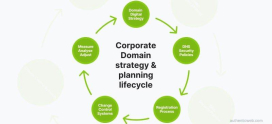
The Role of User Experience in Website Success
If you’ve ever been on a website that felt like a labyrinth—lots of twists and turns, confusing directions—you know how frustrating it can be. You search for something specific, and instead, you’re grappling with endless menus and pop-ups. That’s where user experience (often abbreviated as UX) comes into play. It’s like the unsung hero of the digital world, quietly making certain that when you arrive at a website, you feel more like a guest than an unwelcome intruder.
Understanding User Experience: It’s More Than Just Pretty Graphics
Let’s get down to brass tacks. User experience isn’t merely about how a website looks, although aesthetics definitely have their place. Imagine walking into a beautifully designed coffee shop, only to find the barista is out of stock on all your favorite drinks. Even the prettiest place can’t save a bad experience. UX encompasses everything from how easy it is to navigate the site, to how quickly it loads, and how secure your information is when you’re ready to hit that checkout button.
The Emotional Rollercoaster of Users
It might sound dramatic, but in the world of online browsing, user experience can truly be an emotional rollercoaster. Picture this: you’re searching for a new pair of running shoes. You land on a site with vibrant images, a clean layout, and a clear search function. You feel energized as you effortlessly find the perfect pair. Now compare that to a different site where you have to squint to read tiny fonts, dodging pop-ups like they’re mosquitoes in summer. Ugh! What a buzzkill!
When users have a seamless experience, they’re more likely to not only return but also tell their friends about that site. Good UX turns casual visitors into loyal customers. It’s all about forging that emotional connection, making users feel valued and understood.
The Elements of Stellar User Experience
So, how do we create this elusive beast called great UX? Luckily for you, it’s not a mystery! Below, I’ve laid out several key elements that contribute to a successful user experience.
- Intuitive Navigation: Think of your website as a map. Users should easily find their way to the information they need without feeling lost.
- Fast Load Times: A website that loads slowly is like a boring dinner party—you just want to leave! Aim for a loading time of under three seconds.
- Mobile Optimization: In today’s world, people are on their phones more than ever. If your site isn’t mobile-friendly, you’re leaving a ton of potential customers on the table.
- Accessibility: Websites should be designed for everyone, including those with disabilities. Think alt text for images and keyboard navigability.
- Security: In an age rife with data breaches, ensuring your site is secure is paramount. Users should feel safe providing personal information.
A Personal Anecdote: The Coffee Shop That Changed Everything
I remember my first experience with a website that nailed the UX element perfectly. It was for a local coffee shop. I was craving a unique blend, and not only did they showcase high-quality images of their offerings, but the site had an interactive menu! I could pick and choose what I wanted, customizing my order right down to the oat milk. It felt personal, and within a few minutes, I had my order placed for pickup.
Contrast this with another experience I had with a popular online retailer. I was ready to buy a new camera lens, and instead, I got sidetracked by a poorly laid out site overloaded with ads. I abandoned my shopping cart and went elsewhere. That’s the power of good UX—it can make or break your conversion rate.
The Benefits of a Great User Experience
You might be wondering, “Sure, that all sounds great, but what’s the tangible benefit of concentrating on UX?” Well, let me break it down for you:
- Increased Conversion Rates: When users find what they want easily, they’re more likely to convert, whether that means making a purchase or signing up for a newsletter.
- Improved Customer Satisfaction: Happy customers are repeat customers. Providing a delightful experience leads to word-of-mouth referrals.
- Lower Bounce Rates: If a site is user-friendly, people are less likely to leave immediately after landing on it.
- Enhanced Brand Loyalty: A fantastic experience helps in building trust and keeping customers coming back for more.
Measuring the Success of User Experience
Alright, so you’ve invested time and effort into improving UX. Now, how do you really know it’s paying off? One great way is to employ metrics like:
- Net Promoter Score (NPS): This measures customer satisfaction and loyalty by asking how likely users are to recommend your site to others.
- Google Analytics: Monitor your website’s traffic, bounce rates, and and average time spent on pages to gain insights into user behavior.
- User Journey Mapping: Understanding how users navigate through your site can help pinpoint where they might be getting stuck.
Think Beyond Just Your Website
While the focus often lies squarely on the website, don’t forget that your customer service and support are part of the user experience too. Imagine you’ve just ordered something, and it doesn’t arrive. You reach out to customer support, and they respond quickly with an easy solution. That’s a huge plus in your UX book! Offering multi-channel support like live chat, email, and phone can make a world of difference.
What DarazHost Brings to the Table
If you’re looking to take your website and its UX to the next level, I highly recommend considering services like DarazHost. They’ve got plans that not only offer great uptime and speed but also focus heavily on security and customer support. With DarazHost, you won’t just have a website; you’ll be creating an experience.
Wrapping It Up
So, whether you’re an entrepreneur looking to launch a new site, or a seasoned developer refining an existing one, remember: investing in user experience isn’t just money well spent—it’s crucial for your website’s success. You wouldn’t invite someone over for a dinner party and serve them cold pizza on a dirty plate. So why would you let visitors down with a poor online experience?
Empowering users through thoughtful UX can make all the difference. Not only does it reflect the heart and soul of your brand; it also creates a community of loyal customers ready to champion your cause. Your website is a reflection of you—make it shine!
FAQs
- What is the difference between UI and UX? UI (User Interface) refers to the visual elements of a website, while UX encompasses the overall experience a user has with that website.
- Why is UX important for SEO? Search engines like Google prioritize sites that offer an excellent user experience, which can result in better rankings.
- How often should I update my website’s UX? Regularly! Keep an eye on user feedback and analytics, and make adjustments whenever necessary.
So, what do you think? Are you ready to take your user experience to the next level? Let’s make it happen!









